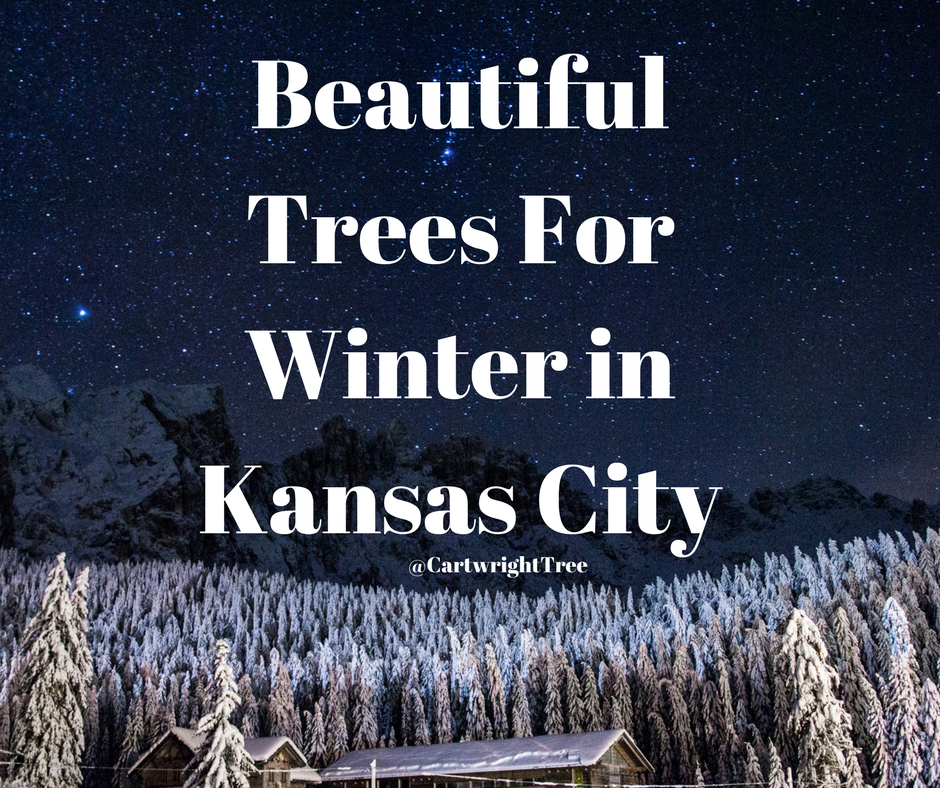
Winter is often thought of as the time of year to escape the harsh elements and head indoors to get cozy in Kansas City. Most plants are dormant, and the garden is a much more subdued place than in the spring and summer, when there's all that vibrant and budding color. But don't dismiss your garden in the off season. It is within this sedate atmosphere that trees form and structure takes center stage, and a whole new level of interest can be gained.
Evergreen trees are the obvious stars of the Kansas City winter landscape because they provide structure year-round, but many deciduous options have interesting bark and a beautiful branch form. When planning a site for your winter-interest tree, think of an area of your garden where the surrounding plantings are mostly herbaceous, so your feature tree can show its true colors and isn't blocked by foliage. Here are some of Cartwright Tree Care's favorite winter trees.
Evergreens for Color and Structure
When most people think of the best trees for winter landscape interest, they naturally think of evergreens. There's good reason: In the Northern Hemisphere, evergreens, or conifers, typically retain their needles (or leaves) year-round and remain colorful throughout the winter.
When it comes to evergreens, people aren't aware of how many needle types there are; their diversity makes them one of the best trees for winter landscape interest.
Some of Cartwright Tree Care’s favorite evergreens for winter landscape interest include cedars for their lovely architecture and display quality when it snows, and firs and spruces for both trees' conical shapes that mesh well with the landscape. Firs and spruces are also commonly used as Christmas trees, making them a traditional favorite for winter landscape interest. However, they can get really big, so size is a consideration.
Branch Interest with Deciduous Trees
Deciduous trees, or those that lose their leaves in the fall, are not often considered the best trees for winter landscape interest. But smart deciduous tree choices can add four-season beauty to your yard.
One characteristic to look for, is branch architecture, which can also be affected by pruning patterns. Trees that have interesting branch architecture -- especially clusters of dense, fine small branches -- are absolutely gorgeous, especially if snow falls. They look almost like sculptures!
Bark color and texture, as well as berries that stay on the tree, are important factors for deciding the best trees for winter landscape interest. Some of Cartwright Tree Care’s favorites are:
Osage orange: It's great for its branch architecture.
Ginkgo: This ancient tree has particularly pretty leaves the rest of the year.
Japanese maple: If you're looking for a smaller species, this tree can supply great architectural features.
Eucalyptus: I really like the peeling bark of some species.
Birch: River birch and paper birch trees are some of the best trees for winter landscape interest for their color and texture.
Cherry: Some varieties can have a stunning wine-burgundy color bark.
Holly and Hawthorn: Some varieties of these trees have interesting fruit in the winter, giving them an added plus for winter landscape interest.
If you're planting a tree for winter interest, make sure nothing blocks your view of it, or choose a place that has a great winter view.
Before you invest in any tree, though, consider location, site suitability, and mature size. The tree should harmonize with the rest of the landscape, of course, but aesthetic wishes shouldn't trump the trees best suited for your climate and available space. Finding the perfect tree for a specific site is very hard. People might say that winter interest, fall color, interesting fruit, and bark are prioritizes, but it's rare to find a tree that has all of the characteristics that you want.

